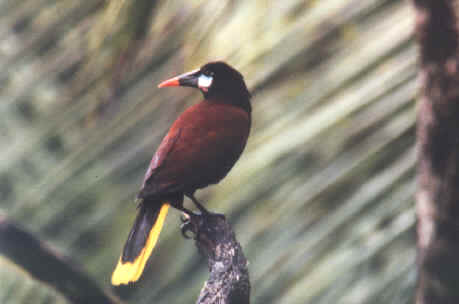
E-mail: font@focusonnature.com
Phone: Toll-free in USA 1-888-721-3555
or 302/529-1876
 |
PO Box 9021,
Wilmington, DE 19809, USA E-mail: font@focusonnature.com Phone: Toll-free in USA 1-888-721-3555 or 302/529-1876 |
 Birds
during the
Birds
during the
Focus On Nature Tour
in HONDURAS
in December 2002
List compiled by Armas Hill,
leader of the tour
Dates:
December 2-10, 2002
Codes:
hc: in highlands (western), particularly in the area
of Ruinas Copan, about 600 meters (1800 feet) above sea-level)cc: along the Caribbean
coast, including area of Tela (& Lancetilla)
cs:
along the Caribbean slope, including Pico Bonito
sp: in city of San Pedro
Sula
(t): a globally
threatened or rare species, designated by Birdlife International.
(t1): critical (t2): endangered (t3): vulnerable
(nt): a near-threatened species globally.
(i): an introduced species.
(GUr): rare in Guatemala
(i): introduced species.
(HN
Links:
A Complete List of
Honduras Birds Birds during previous FONT tours in Honduras
Mammals
in Central
America (with some photos)
Previous Honduras Tour Highlights
Upcoming Central America Tour Itineraries
Bird-List:
Mammals
& Other Nature during FONT Tours in Honduras
(in December 2002)
Mantled Howler Monkey ______ cc
Alouatta palliata
Central American Agouti ______ hc,ly,cs
Dasyprocta punctata
White-nosed Coati ______ ly
Nasua narica
Northern Raccoon ______ cc
Procyon lotor
Neotropical River Otter ______ ly
Lutra longicaudis
Eastern Cottontail ______ ly
Sylvilagus floridanus
Variegated Squirrel ______ ly,cs
Sciurus variegatoides
sac-winged bat (sp.) ______ cc
Saccopteryx spp.
bat (sp.) ______ cc,cs
Leaf-cutter and other ants ______ hc,cs
an assortment of butterflies ______ hc,ly,cc,cs